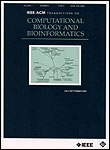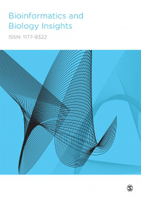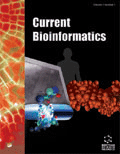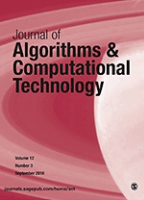
IEEE-ACM Transactions on Computational Biology and Bioinformatics
Scope & Guideline
Advancing the Frontiers of Computational Biology and Bioinformatics
Introduction
Aims and Scopes
- Computational Biology:
The journal publishes research that applies computational methods to understand biological systems, focusing on the development of algorithms and software tools for analyzing biological data. - Bioinformatics Applications:
It emphasizes practical applications of computational techniques in bioinformatics, including genomic, transcriptomic, and proteomic data analysis, as well as systems biology. - Machine Learning and AI Techniques:
A significant portion of the research involves the application of machine learning and artificial intelligence to predict biological outcomes, classify biological samples, and improve diagnostic processes. - Data Integration and Analysis:
The journal explores methodologies for integrating diverse biological data sources, including multi-omics data, to provide comprehensive insights into biological questions. - Novel Algorithm Development:
Research focuses on the creation of new algorithms and computational models that enhance the analysis and interpretation of complex biological data. - Interdisciplinary Approaches:
The journal encourages interdisciplinary research, combining insights from biology, computer science, and statistics to address complex biological challenges.
Trending and Emerging
- Deep Learning Applications:
There is a marked increase in the application of deep learning techniques across various domains of computational biology, including genomics, proteomics, and imaging, showcasing their effectiveness in predictive modeling and classification tasks. - Federated Learning and Privacy-Preserving Methods:
Emerging themes around federated learning and privacy-preserving methods are gaining traction, particularly in medical applications, reflecting a growing concern for data privacy in health-related research. - Integration of Multi-Omics Data:
Research focusing on the integration of multi-omics data is becoming more prevalent, as it allows for a more comprehensive understanding of biological systems and disease mechanisms. - Blockchain for Data Security:
The application of blockchain technology for securing biological data and ensuring data integrity is an emerging area of interest, especially in the context of personalized medicine and health informatics. - Explainable AI (XAI):
There is a growing emphasis on explainable AI methods, aiming to enhance the interpretability of complex models and ensure that predictions are understandable to biologists and clinicians. - Smart Healthcare Systems:
Research is increasingly focused on developing smart healthcare systems that leverage AI and big data analytics for real-time monitoring, diagnosis, and treatment recommendations.
Declining or Waning
- Traditional Statistical Methods:
There has been a noticeable decline in the use of traditional statistical methods for biological data analysis, as more researchers opt for advanced machine learning techniques that offer better predictive performance. - Basic Sequence Alignment Techniques:
The frequency of publications focusing solely on basic sequence alignment methods has decreased, likely due to the advent of more complex and efficient algorithms that integrate multiple biological data types. - Single-Omics Analysis:
Research dedicated to single-omics approaches is less prevalent as the field moves towards multi-omics integration, which provides a more holistic view of biological systems. - Laboratory-Based Experimental Techniques:
With the rise of computational methods, there is a decline in research that primarily focuses on laboratory-based experimental techniques without a significant computational component. - Basic Visualization Techniques:
The use of basic data visualization techniques has decreased as more sophisticated and interactive visualization tools become available, allowing for enhanced data interpretation.
Similar Journals

Bioinformatics and Biology Insights
Fostering collaboration at the forefront of biological research.Bioinformatics and Biology Insights is a premier open-access journal dedicated to advancing the frontiers of bioinformatics and biology. Published by SAGE Publications Ltd, this journal is a leading platform for disseminating high-quality research that integrates computational methods with biological insights. Since its inception in 2007, the journal has garnered significant recognition, reflecting its commitment to excellence, as evidenced by its impressive impact factor and a strong presence across multiple quartiles in applied mathematics, biochemistry, and computational sciences. With a rank of Q1 in both Applied Mathematics and Computational Mathematics and various other notable rankings in related fields, it serves as an essential resource for researchers, professionals, and students seeking cutting-edge knowledge and innovations. The journal's open-access model ensures that findings are readily available, fostering collaboration and advancement in this dynamic field. Through its comprehensive scope and rigorous peer-review process, Bioinformatics and Biology Insights continues to play a pivotal role in shaping the future of biological research and computational methodologies.

Computation
Empowering global research with open-access knowledge.Computation, published by MDPI, is an esteemed open-access journal that has been contributing to the fields of applied mathematics and computer science since its inception in 2013. With an E-ISSN of 2079-3197, this Swiss-based journal operates under a philosophy of free knowledge dissemination, allowing researchers, professionals, and students globally to access high-quality content without financial barriers. Recognized for its rigorous peer-review process, Computation is currently categorized in the Q2 and Q3 quartiles across significant domains, including Applied Mathematics (#181/635), Theoretical Computer Science (#52/130), and Modeling and Simulation (#138/324). As it converges towards 2024, the journal continues to attract innovative and impactful research aimed at advancing theoretical frameworks and practical applications within these disciplines. Joining the Computation community not only enriches individual research portfolios but also contributes to the broader conversation on computational methodologies and their applications in solving real-world problems.

Current Bioinformatics
Transforming Biological Data into Meaningful KnowledgeCurrent Bioinformatics, an esteemed journal published by Bentham Science Publishers Ltd, serves as a pivotal platform for the dissemination of cutting-edge research in the fields of bioinformatics, biochemistry, computational mathematics, genetics, and molecular biology. With an ISSN of 1574-8936 and an E-ISSN of 2212-392X, this journal has established itself as a vital resource for researchers, professionals, and students keen on exploring interdisciplinary approaches to biological data analysis. Its prominence is reflected in its quartile rankings for 2023, where it stands in Q3 for biochemistry and computational mathematics, alongside Q4 rankings in genetics and molecular biology. Current Bioinformatics, located in the United Arab Emirates and converging from 2007 to 2024, aims to foster innovation in the field by presenting original research articles, reviews, and case studies that drive forward our understanding of complex biological systems through computational techniques. This journal is an integral resource for those wishing to stay at the forefront of bioinformatics research and applications.

Chem-Bio Informatics Journal
Innovating Connections Between Chemistry and BiologyChem-Bio Informatics Journal is a dedicated platform for the dissemination of innovative research in the intersecting realms of biochemistry and computational science. Published by the CHEM-BIO INFORMATICS SOC in Japan, this journal embraces the rapidly evolving field of chemoinformatics and bioinformatics, fostering scholarly communication among researchers, professionals, and students alike. With its ISSN: 1347-6297 and E-ISSN: 1347-0442, the journal continues to enrich the scientific community by offering insights into novel methodologies and applications that bridge chemistry and biology. Although currently positioned in the fourth quartile in the biochemistry category according to Scopus rankings, contributing to this journal provides an invaluable opportunity for authors to showcase impactful findings that could resonate within the field. The journal is particularly committed to supporting interdisciplinary research that addresses complex biological problems through computational modeling and data analysis. By publishing high-quality and peer-reviewed articles, Chem-Bio Informatics Journal aims to enhance the scientific discourse and is poised to become a pivotal resource for advancing the frontiers of biochemistry and molecular biology.

Journal of Integrative Bioinformatics
Fostering Interdisciplinary Collaboration for Biomedical InnovationJournal of Integrative Bioinformatics, published by WALTER DE GRUYTER GMBH, is a leading open-access journal that has been at the forefront of the field since its inception in 2004. With an E-ISSN of 1613-4516, it serves as a crucial platform for researchers engaged in the interdisciplinary study of bioinformatics, blending insights from biology, computer science, and mathematics. Based in Germany, the journal is recognized for its impact in the realm of general medicine, boasting a Scopus rank of #172 out of 636 and placing in the 73rd percentile of its category. The journal continuously strives to disseminate high-quality research contributions that unify experimental and computational approaches to address complex biomedical questions. Targeted towards academics, professionals, and students alike, the Journal of Integrative Bioinformatics provides essential access to innovative research that enhances our understanding of integrative methodologies in medicine and beyond, especially with converged years spanning from 2008 to 2024.

Frontiers in Bioinformatics
Elevating Research Standards in Computational BiologyFrontiers in Bioinformatics is a leading academic journal dedicated to advancing the field of bioinformatics by publishing high-quality research and review articles. Published by FRONTIERS MEDIA SA, this open-access journal aims to foster innovative research, promote collaborative initiatives, and provide a platform for the dissemination of findings related to computational biology, biostatistics, and the intersection of bioinformatics with other biological disciplines. With a focus on promoting accessibility and visibility of research, Frontiers in Bioinformatics operates under a rigorous peer-review process, ensuring that all published content meets the highest academic standards. The journal has shown a commendable rank across various Scopus categories, including Mathematics, Computational Mathematics, and multiple dimensions of Biochemistry and Molecular Biology, indicating its relevance and impact within the research community. Researchers, professionals, and students will find this journal invaluable for staying abreast of the latest developments and breakthroughs in bioinformatics, enhancing their studies and professional projects.

Algorithms for Molecular Biology
Connecting minds to advance the science of life.Algorithms for Molecular Biology, published by BMC, is a premier Open Access journal dedicated to advancing the field of molecular biology through innovative computational methods. Since its inception in 2006, the journal has provided a vital platform for researchers to share their findings and methodologies, covering a diverse range of topics at the intersection of applied mathematics, computational theory, and molecular biology. With a notable impact factor reflected in its Scopus ranks, including a Q2 classification in both applied mathematics and computational theory, as well as Q3 in molecular and structural biology, the journal plays an essential role in this rapidly evolving discipline. The wide accessibility of articles published under the Open Access model ensures that research findings reach a global audience, fostering collaboration and innovation amongst scientists and professionals alike. As we look towards converging years from 2006 to 2024, Algorithms for Molecular Biology continues to uphold the highest standards of scientific integrity and excellence, reinforcing its status as a key resource for those engaged in the profound complexities of molecular biology.

PLoS Computational Biology
Fostering Collaboration Across Biological DisciplinesPLoS Computational Biology is a premier open-access journal published by the Public Library of Science, committed to advancing the understanding of complex biological data through computational approaches. Since its inception in 2005, the journal has made significant strides in the fields of Cellular and Molecular Neuroscience, Computational Theory and Mathematics, Ecology, Genetics, and Molecular Biology, achieving a notable Q1 ranking in various categories as of 2023. With an exceptional impact factor and an esteemed ranking—such as Rank #23/176 in Computational Theory and Mathematics—PLoS Computational Biology provides a vital platform for researchers, professionals, and students to disseminate their cutting-edge findings and insights. The journal's open-access model ensures that high-quality research is freely accessible worldwide, fostering collaboration and innovation across disciplines. Located in San Francisco, CA, it serves as a hub for the global scientific community, making it an indispensable resource for anyone at the forefront of computational biology and its diverse applications.

Journal of Algorithms & Computational Technology
Pioneering Discoveries in Numerical Analysis and BeyondJournal of Algorithms & Computational Technology, published by SAGE PUBLICATIONS LTD, serves as a noteworthy platform for scholars and practitioners in the realms of applied mathematics, computational mathematics, and numerical analysis. With an ISSN of 1748-3018 and an E-ISSN of 1748-3026, this Open Access journal has been disseminating high-quality research since 2007, ensuring that significant advancements in algorithmic techniques and computational methodologies are readily accessible to the global academic community. Based in the United Kingdom, this journal has steadily established itself within specialized quartiles, notably achieving Q3 ranking in Computational Mathematics and Q4 in both Applied Mathematics and Numerical Analysis for 2023, reflecting its growing influence in these fields. As the journal converges from 2011 to 2024, it aims to cater to the needs of researchers, professionals, and students by publishing innovative research that not only addresses theoretical frameworks but also provides practical applications. By leveraging its open-access model, the Journal of Algorithms & Computational Technology fosters a collaborative environment where knowledge can flourish, allowing for the continuous evolution of algorithms that drive technological advancement.

NEW GENERATION COMPUTING
Driving Excellence in Dynamic Computing DisciplinesNEW GENERATION COMPUTING is a prominent academic journal published by SPRINGER, specializing in the dynamic fields of Computer Networks, Hardware and Architecture, Software Engineering, and Theoretical Computer Science. With a commitment to disseminating high-quality research since its inception in 1983 and extending its coverage to 2024, this journal occupies a vital role in advancing knowledge and innovation within these critical domains. Holding prestigious Q2 rankings in Computer Networks and Communications, Hardware and Architecture, and Software, as well as a Q3 ranking in Theoretical Computer Science for 2023, NEW GENERATION COMPUTING attracts significant contributions from scholars and professionals around the globe. Researchers will find its rigorous peer-review process ensures the publication of impactful studies, while students gain access to cutting-edge research that shapes contemporary computing practices. Though it does not offer open access, the journal remains an invaluable resource in the academic community, fostering collaboration and dialogue among experts aiming to push the boundaries of technology.